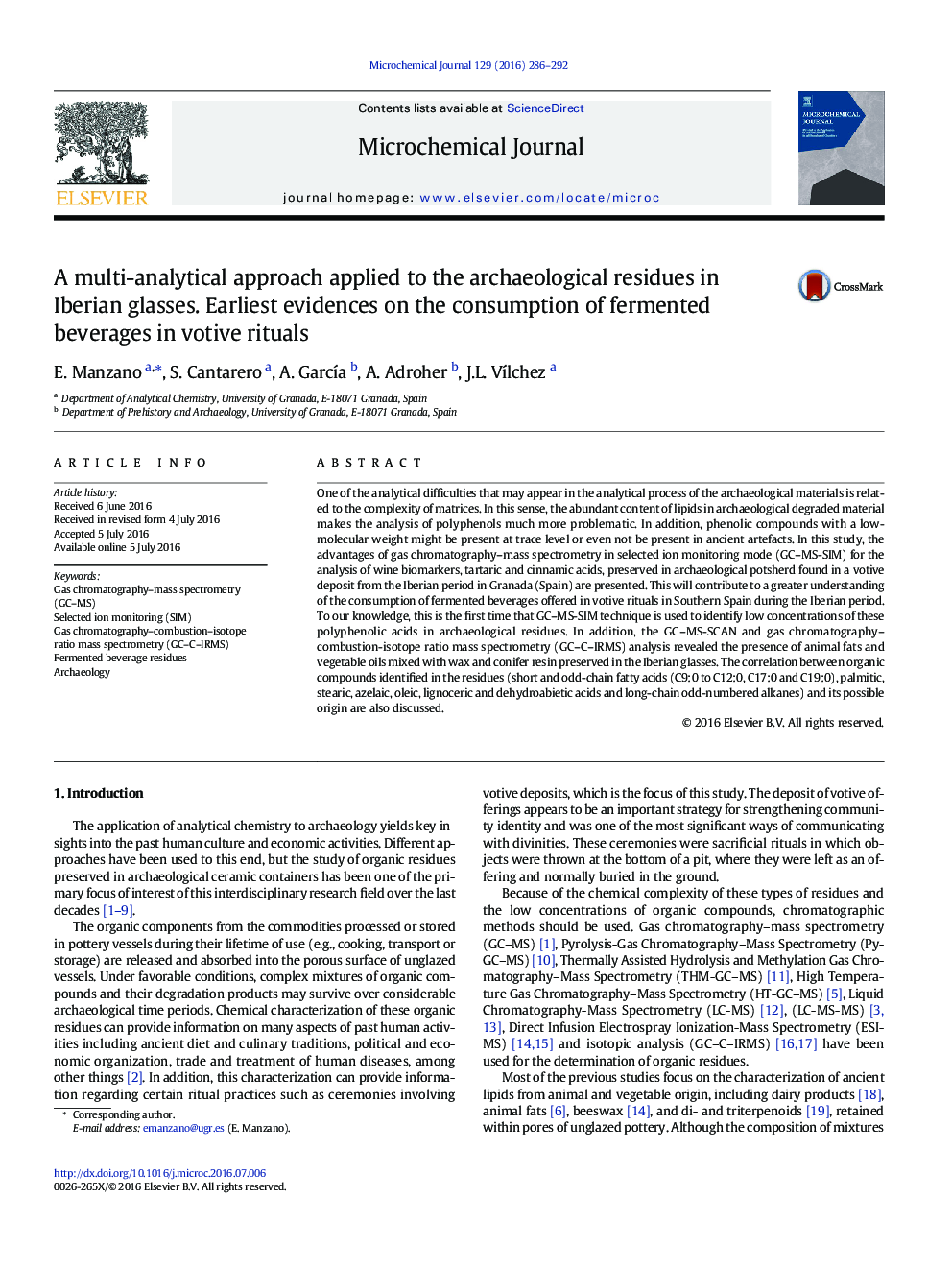| کد مقاله | کد نشریه | سال انتشار | مقاله انگلیسی | نسخه تمام متن |
|---|---|---|---|---|
| 1227620 | 1494865 | 2016 | 7 صفحه PDF | دانلود رایگان |
• An application based on GC–MS in mode SIM is adapted to cope with archaeological samples.
• GC with mass detection in SCAN mode and IRMS are also performed.
• The presence and the relative intensity of the selected ions are found in vessels.
• Reconstruction about votive ritual in southern Spain in Iberian period is discussed.
One of the analytical difficulties that may appear in the analytical process of the archaeological materials is related to the complexity of matrices. In this sense, the abundant content of lipids in archaeological degraded material makes the analysis of polyphenols much more problematic. In addition, phenolic compounds with a low-molecular weight might be present at trace level or even not be present in ancient artefacts. In this study, the advantages of gas chromatography–mass spectrometry in selected ion monitoring mode (GC–MS-SIM) for the analysis of wine biomarkers, tartaric and cinnamic acids, preserved in archaeological potsherd found in a votive deposit from the Iberian period in Granada (Spain) are presented. This will contribute to a greater understanding of the consumption of fermented beverages offered in votive rituals in Southern Spain during the Iberian period. To our knowledge, this is the first time that GC–MS-SIM technique is used to identify low concentrations of these polyphenolic acids in archaeological residues. In addition, the GC–MS-SCAN and gas chromatography–combustion-isotope ratio mass spectrometry (GC–C–IRMS) analysis revealed the presence of animal fats and vegetable oils mixed with wax and conifer resin preserved in the Iberian glasses. The correlation between organic compounds identified in the residues (short and odd-chain fatty acids (C9:0 to C12:0, C17:0 and C19:0), palmitic, stearic, azelaic, oleic, lignoceric and dehydroabietic acids and long-chain odd-numbered alkanes) and its possible origin are also discussed.
Journal: Microchemical Journal - Volume 129, November 2016, Pages 286–292
